Giants built the temples of Baalbek in Lebanon
The base of the Temple of Jupiter is called the Trilithon, and is constructed of three 1000-tonne limestone megalithic blocks.
Scholars have no clue why anybody would use such enormously big megalithic blocks.
One scholar calculated that to move a 1000-tonne block, no less than 40,000 men would have been required, making logistics virtually inconceivable on the tiny track up to the temple.
Even more amazing is the fact that in a limestone quarry about one quarter of a mile away from the Temple of jupiter in Baalbek you will find an even bigger megalithic building block, known as “Hajar el Gouble”, the Stone of the South, or the “Hajar el Hibla”, the Stone of the Pregnant Woman, it weighs an estimated 1200 tonnes.
It is not mentioned anywhere in Roman records that they where involved in the construction of the base (the Trilithon).
The local inhabitants of the Beqa’a Valley where Baalbek is situated consist in the main of Arab Muslims, Maronite Christians and Orthodox Christians and they say that Baalbek’s was built by a race of giants under the command of Nimrod, the ’mighty hunter’ and ’king of Shinar’ of the Book of Genesis.
There were giants in the earth in those days; and also after that, when the sons of God came in unto the daughters of men, and they bare children to them, the same became mighty men which were of old, men of renown.
–Bible, Genesis 6: 1-4
In folklore from Egypt and Palestine there are many accounts of how sound, used in association with ’magic words’, was able to lift and move large stones. It sounds like they used some sonic technology, this could be an explanation how the Giants moved these megaliths.
It is believed that the Baalbek’s foundation was built around 12,500 B.C.
Who where the Giants?
In the Bible, the word nephilim has been translated to Giants.
The Nephilim were an race born from the “daughters of men”, and the “Sons of God”.
Simply put, they where an half alien, half human race.
A Brief History of Surnames This page will attempt to relate a brief history of surnames (or last names as we call them today), focusing on those of Western Europe. It will also discuss the categories of meanings that surnames come in. Originally, people had no use for surnames. They lived in communities that were small enough that it was unlikely people would have the same given name. Also, people rarely traveled great distances so it was unlikely they would meet anyone sharing the same name. As communities grew and people started traveling more there became a need to differentiate between people sharing the same given name. This caused surnames to come into existence.
Patronymics
The earliest surnames were not inherited as they are today. They simply described the person who bore the name. The most common early naming system of this sort is called patronymics (patro=father, nymics=naming). This system of surnames uses the name of a person’s father as that person’s surname. So, if a village had two people named Thomas in it, then one Thomas might be Thomas son of Robert and the other Thomas might be Thomas son of John. The one major disadvantage of this system is that with each generation surnames would change. For example, if you had Charles who was the father of Patrick who was the father of Thomas, then the full names of Charles’ son and grandson would be Patrick Charles and Thomas Patrick. Despite the lack of consistency that is found in a patronymic naming system, it was very popular in many countries of Western Europe for centuries. The following are examples of how several different groups of people used the patronymic system to develop surnames.
Denmark: the ending –sen (for a son) and –datter (for a daughter) was attached to the father’s name. e.g. Hansen, Sorensdatter
Sweden: similar to Denmark except –son and –dottir were used. e.g. Anderson, Svensdottir
Netherlands: The endings –s, -se, and –sen were used for son or daughter. e.g. Jansse or Dirks
Poland: For a son, -wicz was used. For a daughter, -ovna was used.
French/Old English: Fitz- was used for a son or a daughter, however people given surnames containing “Fitz” were often illegitimate. e.g. FitzGerald, FitzAlan.
Scotland: Mac- and Mc- (For a son or daughter). e.g. MacDonald, McLeod
Ireland: O’ and Mc- (for a son or daughter). The “O’” can also be used for a grandson or granddaughter. e.g. O’Brien, McDermott
Spain/Portugal: -ez (Spain) or –es (Portugal) e.g. Gonzales, Hernandez
Wales: In Wales, two patronymic systems existed. In one, the surnames of the children were the unmodified father’s name, so the son of Rees might be James Rees. In the second system the word “ap” (son of) or “verch/ferch” (daughter of) were incorporated into the new surname creating names like David ap Rhys or Maredudd ferch Llewelyn.
Place Surnames
In addition to being named after their fathers, people were also named after places where they lived, either past or present. Place names come in several different categories. First, someone can be named after a village or town where they were born or have lived. People are rarely named after the town in which they are currently living, but after they leave that town and move to a new place they can be named after the town where they used to live. So someone named Ben who used to live in York came to be known as Ben of York or more simply Ben York.
Another form of a place surname occurs when people are name after a geographic feature that they lived near or on. People who lived near a hill or a mountain might have been called Hill (English), Maki (Finnish), Jurek (Poland), etc. People who lived near a lake or stream might have been called Loch (Scottish), Rio (Spanish) or Brooks (English). People were named after woods, stones, fields, swamps, fenced places, valleys, etc. People could be named after something simple like a place where grass grew (the -ley at the end of many surnames means this) or they could have been named because they lived on (or near) a field where barley was grown (Berland).
Place Surnames can often be found with prepositions meaning “of” or “from” attached to them. This can be seen in names like De Berry (of Berry) or Van Ness (From Ness).
Personal Characteristics
A third type of surname that is found is a surname that is given to someone because of his or her personal characteristics. These characteristics could be physical addressing a person’s hair color, height, complexion, weight, etc. An example of a surname formed from a physical characteristic is the surname red, given to a red-haired person. Variations of this surname can be found in several countries and include: Reid (English), Russ (English), Rousseau (French), Rossi (Italian) Cerveny (Czech), Roth (German) and Flynn (Irish).
A second type of surname given based on personal characteristics would be a surname given on the basis of personality traits or abilities. Surnames can be found that mean fast, slow, dumb, smart, etc. Surnames that are animal names also fall into this category as they were usually assigned to people who shared characteristics with the animal they were named after. So someone called Fish might have been an excellent swimmer.
Occupations
The forth and last general category of surnames might also be classified as a subset of personal characteristics. This category of surname is surnames that are given based on the surname bearer’s occupation. In this category, people were identified by their occupation. In English, some obvious examples of Occupational Surnames are: Taylor, Shepherd, Fisher, and Baker. These common occupational surnames can be found translated into most languages that had surnames. The topic of occupational surnames cannot be discussed without mentioning what is arguably the most popular occupational surname found, Smith. This surname was given to the worker of metals (often the blacksmith). Its variations include Schmidt (German, Danish), Kovars (Hungarian), Ferraro (Italian), Kowal (Polish), etc.
Surname Inheritance
As mentioned above, surnames were originally given to a single person. These surnames would change from generation to generation, making it difficult to keep track of family relationship. As time moved on people stopped changing surnames from generation to generation. The first people to do this were often the nobility and royalty of an area. These permanent surnames seem to appear first after the first crusades. They started in France at about 1000 and spread with the Norman Invasion to England and Scotland. Most British surnames appear to have become fixed or permanent between 1250 and 1450. Places with strong ties to England developed a system of fixed surnames faster then others. The following is an overview of when some countries of Europe stopped using patronymics and developed an inherited surname system. Most of Scotland had fixed surnames early on, but it was not until the 18th century that people in the highlands stopped using a patronymic system. In the Netherlands, fixed surnames were officially adopted in 1811-1812, but it took a few decades for people to stop using a patronymic system. Scandinavian countries continued using a patronymic system longer then other countries even though laws were established by Napoleon and others to stop this practice. It wasn’t until about 1860 that people in Scandinavia started adopting fixed surnames.
Israel will never wax pale
16 MarThe siege of Jerusalem
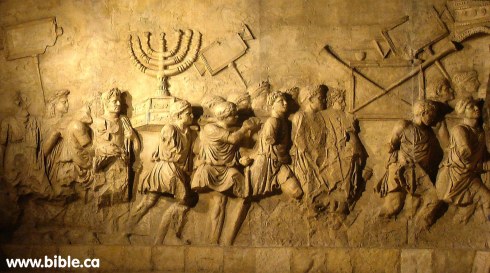 The Siege of Jerusalem in the year 70 CE was the decisive event of the First Jewish-Roman War. The Roman army, led by the future Emperor Titus, with Tiberius Julius Alexander as his second-in-command, besieged and conquered the city of Jerusalem, which had been occupied by its Jewish defenders in 66 CE.
The Siege of Jerusalem in the year 70 CE was the decisive event of the First Jewish-Roman War. The Roman army, led by the future Emperor Titus, with Tiberius Julius Alexander as his second-in-command, besieged and conquered the city of Jerusalem, which had been occupied by its Jewish defenders in 66 CE.
The siege ended with the sacking of the city and the destruction of its famous Second Temple.
Siege
Despite early successes in repelling the Roman sieges, the Zealots fought among themselves, and they lacked proper leadership, resulting in poor discipline, training, and preparation for the battles that were to follow.
Titus surrounded the city, with three legions (V Macedonica, XII Fulminata, XV Apollinaris) on the western side and a fourth (X Fretensis) on the Mount of Olives to the east. He put pressure on the food and water supplies of the inhabitants by allowing pilgrims to enter the city to celebrate Passover, and then refusing to allow them back out. After Israelite allies killed a number of Roman soldiers, Titus sent Josephus, the israelite historian, to negotiate with the defenders; this ended with Jews wounding the negotiator with an arrow, and another sally was launched shortly after. Titus was almost captured during this sudden attack, but escaped.
In mid-May Titus set to destroying the newly built Third Wall with a ram, breaching it as well as the Second Wall, and turning his attention to the Fortress of Antonia just north of theTemple Mount. The Romans were then drawn into street fighting with the Zealots, who were then ordered to retreat to the temple to avoid heavy losses. Josephus failed in another attempt at negotiations, and Israelite attacks prevented the construction of siege towers at the Fortress of Antonia. Food, water, and other provisions were dwindling inside the city, but small foraging parties managed to sneak supplies into the city, harrying Roman forces in the process. To put an end to the foragers, orders were issued to build a new wall, and siege tower construction was restarted as well.
After several failed attempts to breach or scale the walls of the Antonia Fortress, the Romans finally launched a secret attack, overwhelming the sleeping Zealots and taking the fortress. Overlooking the Temple compound, the fortress provided a perfect point from which to attack the Temple itself. Battering rams made little progress, but the fighting itself eventually set the walls on fire; a Roman soldier threw a burning stick onto one of the 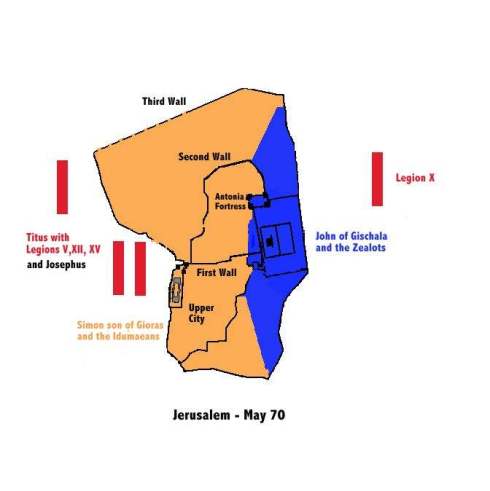 Temple’s walls. Destroying the Temple was not among Titus’ goals, possibly due in large part to the massive expansions done by Herod the Great mere decades earlier. Titus had wanted to seize it and transform it into a temple dedicated to the Roman Emperor and the Roman pantheon. The fire spread quickly and was soon out of control. The Temple was destroyed on Tisha B’Av, in the beginning of August, and the flames spread into the residential sections of the city.
Temple’s walls. Destroying the Temple was not among Titus’ goals, possibly due in large part to the massive expansions done by Herod the Great mere decades earlier. Titus had wanted to seize it and transform it into a temple dedicated to the Roman Emperor and the Roman pantheon. The fire spread quickly and was soon out of control. The Temple was destroyed on Tisha B’Av, in the beginning of August, and the flames spread into the residential sections of the city.
The Roman legions quickly crushed the remaining Israelites resistance. Part of the remaining Jews escaped through hidden underground tunnels, while others made a final stand in the Upper City. This defence halted the Roman advance as they had to construct siege towers to assail the remaining Jews. The city was completely under Roman control by September 7 and the Romans continued to hunt down the Jews that had fled the city.The Roman legions quickly crushed the remaining Israelites resistance. Part of the remaining Jews escaped through hidden underground tunnels, while others made a final stand in the Upper City. This defence halted the Roman advance as they had to construct siege towers to assail the remaining Jews. The city was completely under Roman control by September 7 and the Romans continued to hunt down the Jews that had fled the city Toward Africa in order to hide among the other Dark skin people.
Igbo/Heebo, and Negro
There are several theories concerning the etymology of the word “Igbo” (wrongly spelled “Ibo” by British colonialists). Eighteenth-century texts 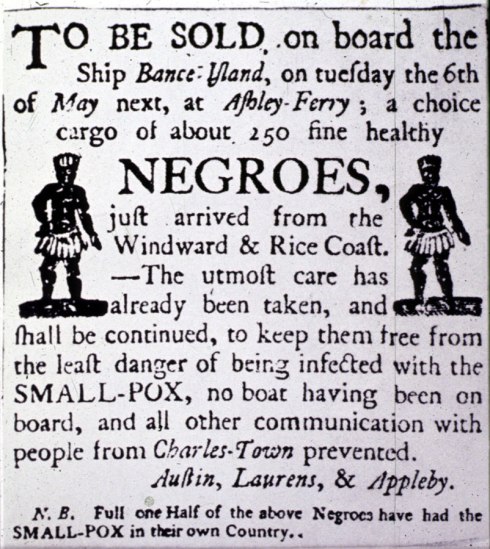 had the word as “Heebo” or “Eboe,” which was thought to be a corruption of “Hebrew.” “Igbo” is commonly presumed to mean “the people.” The root -bo is judged to be of Sudanic origin; some scholars think that the word is derived from the verb gboo and therefore has connotations of “to protect,” “to shelter,” or “to prevent”—hence the notion of a protected people or a community of peace. According to other theorists, it may also be traced to the Igala, among whom onigbo is the word for “slave,” oni meaning “people.” This is very interesting , as all slave bill of sale will never call the slaves African, but Negro or heebo
had the word as “Heebo” or “Eboe,” which was thought to be a corruption of “Hebrew.” “Igbo” is commonly presumed to mean “the people.” The root -bo is judged to be of Sudanic origin; some scholars think that the word is derived from the verb gboo and therefore has connotations of “to protect,” “to shelter,” or “to prevent”—hence the notion of a protected people or a community of peace. According to other theorists, it may also be traced to the Igala, among whom onigbo is the word for “slave,” oni meaning “people.” This is very interesting , as all slave bill of sale will never call the slaves African, but Negro or heebo
I dont agree with some of this guys understanding but, never the less he has a lot if understanding and good knowledge.
Israelite’s lived in projects just like “Black people” do today?
8 Marwell friends, Its been a while. Me and my wife had a new baby girl, Im working on my up coming radio show, and Ive been talking with some of our brothers in brazil. All in all Ive been busy. never the less I have to bring this out. As always I am not with ISUPK but needs to get out
The Mesha Stele ( the Moabite stone)
11 Feb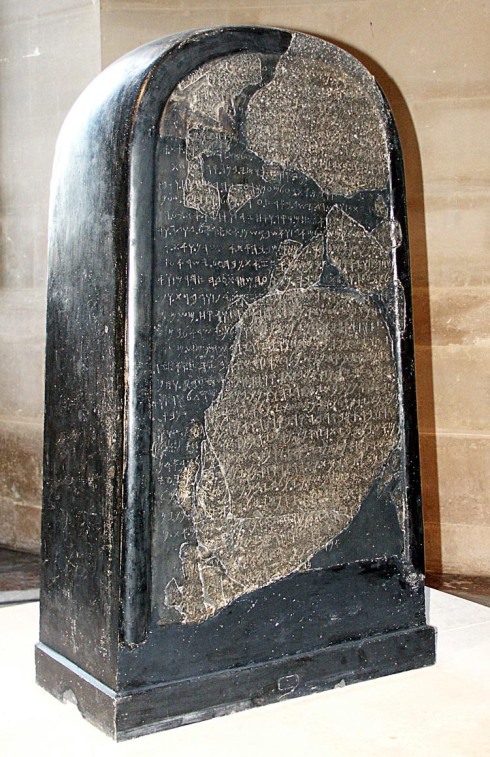 The Mesha Stele (also known as the “Moabite Stone”) is a stele (inscribed stone) set up around 840 BCE by King Mesha of Moab (a kingdom located in modern Jordan). Mesha tells how Kemosh, the God of Moab, had been angry with his people and had allowed them to be subjugated to Israel, but at length Kemosh returned and assisted Mesha to throw off the yoke of Israel and restore the lands of Moab. Mesha then describes his many building projects.
The Mesha Stele (also known as the “Moabite Stone”) is a stele (inscribed stone) set up around 840 BCE by King Mesha of Moab (a kingdom located in modern Jordan). Mesha tells how Kemosh, the God of Moab, had been angry with his people and had allowed them to be subjugated to Israel, but at length Kemosh returned and assisted Mesha to throw off the yoke of Israel and restore the lands of Moab. Mesha then describes his many building projects.
The stone was discovered intact by a missionary at the site of ancient Dibon (now Dhiban, Jordan), in August 1868. The next year it was smashed by local villagers during a dispute over its ownership, but a “squeeze” (a papier-mâché impression) had been obtained, and fragments containing most of the inscription (613 letters out of about a thousand) were later recovered and pieced together. The squeeze and the reassembled stele are now in the Louvre Museum.
The stele, whose story parallels, with some differences, an episode in the bible’s Books of Kings (2 Kings 3:4-8), provides invaluable information on the Moabite language and the political relationship between Moab and Israel at one moment in the 9th century BCE. It is the most extensive inscription ever recovered that refers to the kingdom of Israel (the “House of Omri”), it bears the earliest certain extra-biblical reference to the Israelite god Yahweh, and — if French scholar André Lemaire’s reconstruction of a portion of line 31 is correct — the earliest mention of the “House of David” (i.e., the kingdom of Judah).
2Ki 3:4 And Mesha king of Moab was a sheepmaster, and rendered unto the king of Israel an hundred thousand lambs, and an hundred thousand rams, with the wool.
2Ki 3:5 But it came to pass, when Ahab was dead, that the king of Moab rebelled against the king of Israel.
2Ki 3:6 And king Jehoram went out of Samaria the same time, and numbered all Israel.
2Ki 3:7 And he went and sent to Jehoshaphat the king of Judah, saying, The king of Moab hath rebelled against me: wilt thou go with me against Moab to battle? And he said, I will go up: I am as thou art, my people as thy people, and my horses as thy horses.
2Ki 3:8 And he said, Which way shall we go up? And he answered, The way through the wilderness of Edom.
Mesha Stale Translation
1. I am Mesha, son of KMSYT (Kemosh[-yat]), the king of Moab, the Di-
2. -bonite. My father was king of Moab thirty years, and I reign-
3. -ed after my father. And I built this high-place for Kemosh in QRH (“the citadel”), a high place of [sal-]
4. -vation because he saved me from all the kings (or “all the attackers”), and because let me be victorious over all my adversaries. Omr-
5. -i was king of Israel and he oppressed Moab for many days because Kemosh was angry with his
6. land. And his son replaced him; and he also said, “I will oppress Moab”. In my days he spoke thus.
7. But I was victorious over him and his house. And Israel suffered everlasting destruction, And Omri had conquered the lan-
8. -d of Madaba, and he dwelt there during his reign and half the reign of his son, forty years. But Kemosh
9. returned it in my days. So I [re]built Baal Meon, and I the water reservoir in it. And I bu[ilt]
10. Qiryaten. The man of Gad had dwelt in Ataroth from of old; and the king of Israel
11. built Ataroth for him. But I fought against the city and took it. And I slew all the people [and]
12. the city became the property of Kemosh and Moab. And I carried from there the altar for its DVDH (“its Davidic altar”?) and I
13. dragged it before Kemosh in Qerioit, and I settled in it men of Sharon m[en]
14. of Maharit. And Kemosh said to me, “Go! Seize Nebo against Israel.” so I
15. proceeded by night and fought with it from the crack of dawn to midday, and I to-
16. -ok it and I slew all of them: seven thousand men and boys, and women and gi-
17. and maidens because I had dedicated it to Ashtar Kemosh I took [the ves-]
18. -sels of YHWH, and I dragged them before Kemosh. And the king of Israel had built
19. Yahaz, and he dwelt in it while he was fighting with me, but Kemosh drove him out before me. so
20. I took from Moab two hundred men, all his captains. And I brought them to Yahaz, And I seized it
21. in order to add (it) to Dibon. I (myself) have built the ‘citadel’, ‘the wall(s) of the forest’ and the wall
22. of the ‘acropolis’. And I built its gates; And I built its towers. And
23. I built a royal palace; and I made the ramparts for the reservo[ir for] water in the mid-
24. -st of the city. But there was no cistern in the midst of the city, in the ‘citadel,’ so I said to all the people, “Make [for]
25. yourselves each man a cistern in his house”. And I hewed the shaft for the ‘citadel’ with prisoner-
26. -s of Israel. I built Aroer, and I made the highway in the Arnon.
27. I built Beth-Bamot, because it was in ruins. I built Bezer, because it was
28. a ruin [with] the armed men of Dibon because all of Dibon was under orders and I ru-
29. -led [ove]r [the] hundreds in the towns which I have annexed to the land. And I bui-
30. -lt Medeba and Beth-Diblaten and Beth-Baal-Meon, and I carried there [my herdsmen]
31. [to herd] the small cattle of the land, and Horonain, in it dwelt house of Dw[D]…
32. [and] Kemosh [s]aid to me, “Go down, fight against Horonain”. And I went down [and I fou-
33. -ght with the city and I took it and] Kemosh [re]turned it in my days. Then I went up from there te[n…]
34. […a high] place of justice and I […]
Deep Underground Military Base. Esau will try to hide
10 Feb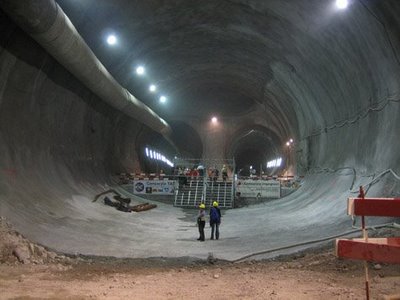 Deep underground Military bases or D.U.M.B. as its ironically called, is a Military installation that is set ether in side a mountain or deep underground. Unknown to most people in the U.S. is a dark secret that has been right under your nose. The main function for these D.U.M.B. is to act as a bunker and safe haven for the powerful, super rich, and most influential people of the world. if you have seen my previous post “Esau and the Horites” you know that the Edomite nations are not new to living under the earth. Job talked about them living in the rock and mountains
Deep underground Military bases or D.U.M.B. as its ironically called, is a Military installation that is set ether in side a mountain or deep underground. Unknown to most people in the U.S. is a dark secret that has been right under your nose. The main function for these D.U.M.B. is to act as a bunker and safe haven for the powerful, super rich, and most influential people of the world. if you have seen my previous post “Esau and the Horites” you know that the Edomite nations are not new to living under the earth. Job talked about them living in the rock and mountains
Job 30:6 To dwell in the cliffs of the valleys, in caves of the earth, and in the rocks.
Job 30:7 Among the bushes they brayed; under the nettles they were gathered together.
Job 30:8 They were children of fools, yea, children of base men: they were viler than the earth.
Whats unknown to them is that fact that this is prophecy being fulfilled. This fact was shown to me by a brother named Ya’qah Ban Yashral. Their is something Esau is scared to death of and its not the fall of society.
Isa 2:10 Enter into the rock, and hide thee in the dust, for fear of the LORD, and for the glory of his majesty.
Isa 2:11 The lofty looks of man shall be humbled, and the haughtiness of men shall be bowed down, and the LORD alone shall be exalted in that day.
Isa 2:12 For the day of the LORD of hosts shall be upon every one that is proud and lofty, and upon every one that is lifted up; and he shall be brought low:
Isa 2:19 And they shall go into the holes of the rocks, and into the caues of the earth for feare of the Lord, and for the glory of his Maiestie; when hee ariseth to shake terribly the earth.
Isa 2:20 In that day a man shall cast his idoles of siluer, and his idoles of golde which they made each one for himselfe to worship, to the moules and to the battes:
Isa 2:21 To go into the clefts of the rocks, and into the tops of the ragged rockes, for feare of the Lord, and for the glorie of his Maiestie; when hee ariseth to shake terribly the earth.

